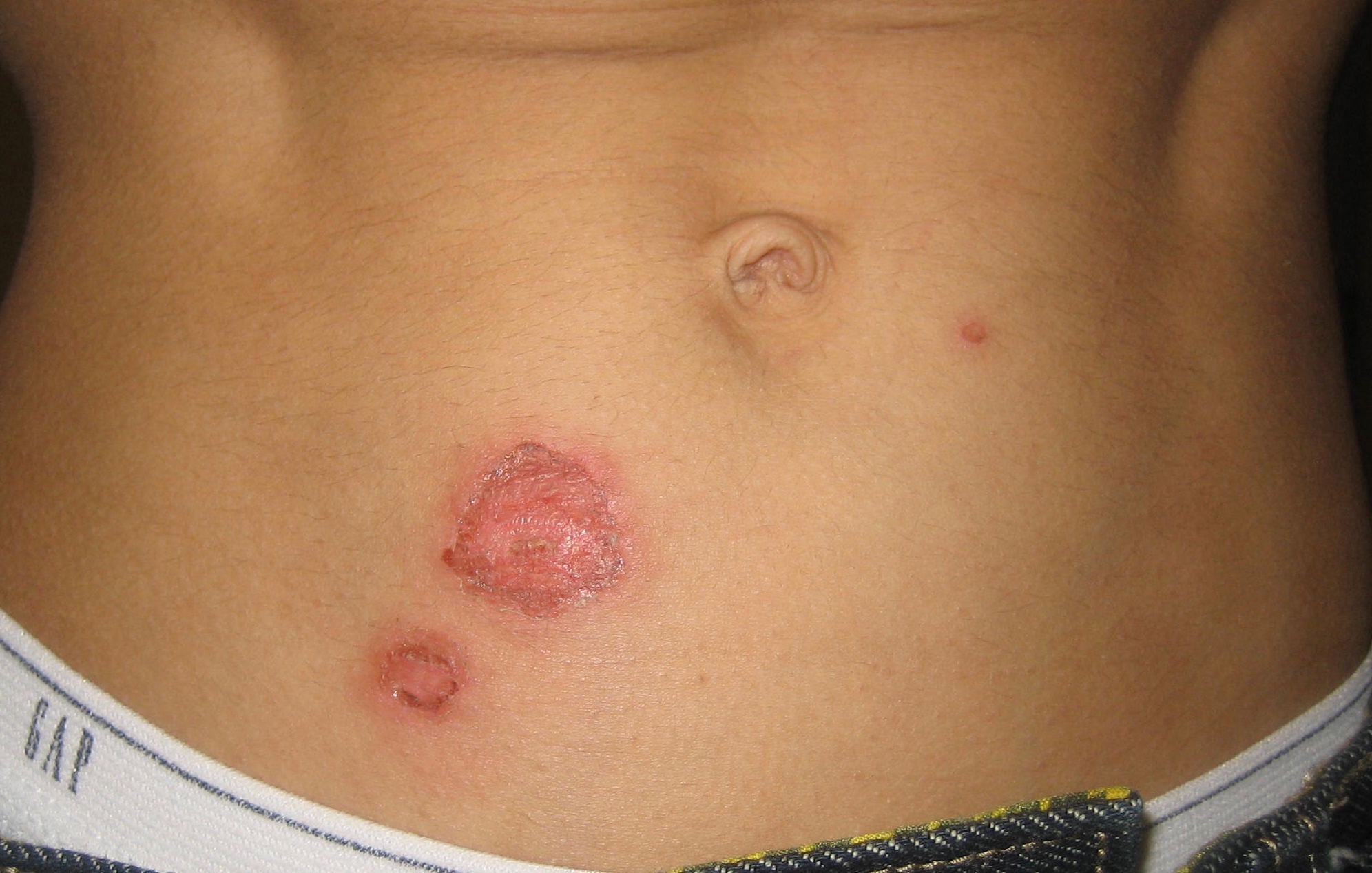|
Ecthyma
Ecthyma( ec·thy·ma , \ ek-ˈthī-mə )is a variation of impetigo, presenting at a deeper level of tissue. It is usually associated with Group A (beta-hemolytic) Streptococcus (abbreviated GAS). See also * Ecthyma gangrenosum Ecthyma gangrenosum is a type of skin lesion characterized by vesicles or blisters which rapidly evolve into pustules and necrotic ulcers with undermined tender erythematous border. "Ecthyma" means a pus forming infection of the skin with an ulcer ... References External links {{Bacterial cutaneous infections Bacterium-related cutaneous conditions ... [...More Info...] [...Related Items...] OR: [Wikipedia] [Google] [Baidu] |
Ecthyma Gangrenosum
Ecthyma gangrenosum is a type of skin lesion characterized by vesicles or blisters which rapidly evolve into pustules and necrotic ulcers with undermined tender erythematous border. "Ecthyma" means a pus forming infection of the skin with an ulcer, "gangrenosum" refers to the accompanying gangrene or necrosis. It is classically associated with ''Pseudomonas aeruginosa'' bacteremia, but it is not pathognomonic. ''Pseudomonas aeruginosa'' is a gram negative, aerobic bacillus. This type of skin lesion was first described in association with ''Pseudomonas aeruginosa'' by L. Barker in 1897. It was given the name "ecthyma gangrenosum" by Hitschmann and Kreibich. It mostly occurs in patients with underlying immunocompromise (e.g. malignancy or HIV). Although most cases are due to ''Pseudomonas aeruginosa'' infection, there are recent reports of this skin lesion in association with other microorganisms, such as ''Escherichia coli'', ''Citrobacter freundii'', ''Klebsiella pneumoniae'', va ... [...More Info...] [...Related Items...] OR: [Wikipedia] [Google] [Baidu] |
Impetigo
Impetigo is a bacterial infection that involves the superficial skin. The most common presentation is yellowish crusts on the face, arms, or legs. Less commonly there may be large blisters which affect the groin or armpits. The lesions may be painful or itchy. Fever is uncommon. It is typically due to either ''Staphylococcus aureus'' or ''Streptococcus pyogenes''. Risk factors include attending day care, crowding, poor nutrition, diabetes mellitus, contact sports, and breaks in the skin such as from mosquito bites, eczema, scabies, or herpes. With contact it can spread around or between people. Diagnosis is typically based on the symptoms and appearance. Prevention is by hand washing, avoiding people who are infected, and cleaning injuries. Treatment is typically with antibiotic creams such as mupirocin or fusidic acid. Antibiotics by mouth, such as cefalexin, may be used if large areas are affected. Antibiotic-resistant forms have been found. Impetigo affected about 140&n ... [...More Info...] [...Related Items...] OR: [Wikipedia] [Google] [Baidu] |
Streptococcus Pyogenes
''Streptococcus pyogenes'' is a species of Gram-positive, aerotolerant bacteria in the genus '' Streptococcus''. These bacteria are extracellular, and made up of non-motile and non-sporing cocci (round cells) that tend to link in chains. They are clinically important for humans, as they are an infrequent, but usually pathogenic, part of the skin microbiota that can cause Group A streptococcal infection. ''S. pyogenes'' is the predominant species harboring the Lancefield group A antigen, and is often called group A ''Streptococcus'' (GAS). However, both ''Streptococcus dysgalactiae'' and the ''Streptococcus anginosus'' group can possess group A antigen as well. Group A streptococci, when grown on blood agar, typically produce small (2–3 mm) zones of beta-hemolysis, a complete destruction of red blood cells. The name group A (beta-hemolytic) ''Streptococcus'' (GABHS) is thus also used. The species name is derived from Greek words meaning 'a chain' () of berries ( at ... [...More Info...] [...Related Items...] OR: [Wikipedia] [Google] [Baidu] |
ILDS
The International League of Dermatological Societies (ILDS) is a non-governmental organization that works closely with the World Health Organization. It was founded in 1935, but because of World War II no congresses were held until 1952. It is governed by the International Committee of Dermatology. The ILDS is the parent organization of the International Foundation for Dermatology, founded in 1987. After the publication of ICD-10, the ILDS produced a series of compatible extensions for use in dermatology Dermatology is the branch of medicine dealing with the skin.''Random House Webster's Unabridged Dictionary.'' Random House, Inc. 2001. Page 537. . It is a speciality with both medical and surgical aspects. A dermatologist is a specialist medica .... References External links Official site HistoryInternational Foundation for DermatologyApplication to Dermatology of International Classification of Disease (ICD-11) Organizations established in 1935 Dermatology organi ... [...More Info...] [...Related Items...] OR: [Wikipedia] [Google] [Baidu] |
